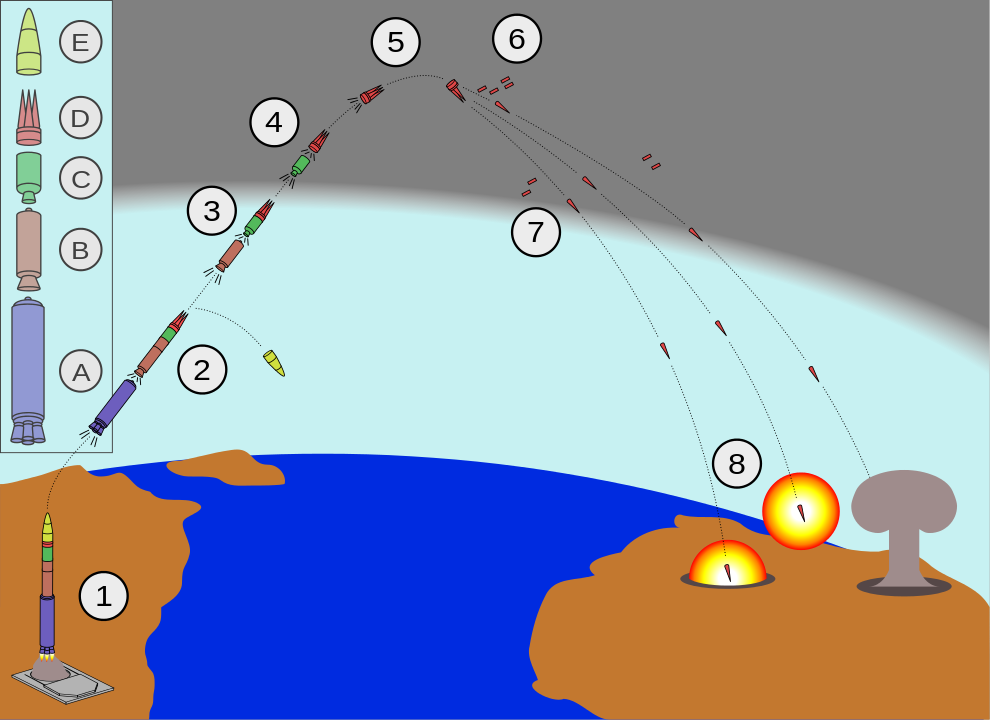The world’s biggest defense company reported on August 7 that it is making “rapid progress” on developing a defensive weapon for intercepting ballistic-missile warheads aimed at the United States. Lockheed Martin
LMT
Lockheed is competing against a Northrop Grumman
NOC
Lockheed Martin and RTX both contribute to my think tank.
If you don’t follow defense closely, you may not have heard of the Next Generation Interceptor. Much of the program is secret, and the industry teams seldom say much in public about their competing designs.
However, NGI may one day prove to be the most important weapon in the entire US arsenal, for one simple reason: it could be the only system capable of defeating North Korean nuclear warheads headed for the American homeland.
North Korea’s eccentric leadership has been developing long-range ballistic missile for two decades, and in February of this year launched a missile called Hwasong-15 capable of delivering warheads against any location in the continental United States.
US intelligence does not believe that the hermit kingdom has developed a nuclear weapon sufficiently compact and lightweight to be carried on that missile, but there is little doubt it is trying to do so. Eventually, it will succeed.
A missile-defense review completed by the Biden administration in 2022 warned that North Korea “continues to improve, expand, and diversify its conventional and nuclear missile capabilities, posing an increased risk to the U.S. homeland and U.S. forces in theater, as well as regional Allies and partners.”
The review went on to describe missile defense and offensive nuclear weapons as “complementary” facets of an integrated framework for deterring nuclear conflict. US policymakers believe that a potent retaliatory capability is sufficient to deter Russia and China, but North Korea’s leadership is so erratic that analysts are less confident about the deterrent effect of a purely offensive approach.
Hence the rationale for the Pentagon’s existing Ground-based Midcourse Defense program, which can intercept modest nuclear attacks made by rogue states and unauthorized or accidental launches from major nuclear powers. North Korea has been the main focus of the program since its inception, because Pyongyang is deemed the most unpredictable actor.
US intelligence expects that if North Korea continues on its current course, it will begin deploying long-range weapons with multiple nuclear warheads and decoys capable of overwhelming the existing US defensive system. That could occur toward the end of this decade, and NGI was conceived to meet that threat.
The homeland missile-defense system as it exists today consists of several dozen single-warhead interceptor missiles deployed in silos in Alaska and California. This system could be saturated by a North Korean attack using multiple-warhead missiles and/or decoys, because each incoming target might require three or four interceptors to be reliably defeated. With only a few dozen interceptors available, the US defense might falter in the face of even a small attack.
NGI addresses this challenge with interceptors that carry multiple kill vehicles, each of which can hit a separate target. Without greatly increasing the number of interceptors in the system—the current plan is to buy 20 NGI missiles—the new weapon would hugely enhance the system’s capacity to engage a limited nuclear attack.
The gain in capability is more than merely additive. The Lockheed Martin design incorporates genuinely revolutionary features capable of keeping the US well ahead of the nuclear threat posed by North Korea. Using digital engineering and advanced modeling techniques, Lockheed has created a modular system that can be affordably sustained and upgraded as the threat evolves.
So, the fact that Lockheed is making progress on an accelerated basis is good news, because no military mission is more important than preventing a successful nuclear attack against the US homeland. Delivery of even a few nuclear warheads against major American cities would produce millions of casualties and probably collapse the domestic economy.
NGI is currently on an event-driven path to critical design review that will decide which industry team wins the right to proceed to production in two years. Competitive prototyping is generally considered the most reliable approach to assuring that what the government decides to buy will work as advertised.
This is all being managed by the Pentagon’s Missile Defense Agency, which has requested $2.1 billion for NGI in the fiscal year beginning October 1. Authorizing and appropriating committees in both chambers of Congress support the program, recognizing its urgency.
There was a time when some political players doubted the desirability of missile defenses for the homeland, fearing that they would lead to a nuclear arms race. The thinking was that building better defenses would provoke adversaries to buy more offensive weapons.
The Biden administration has modulated its approach to missile defense so that programs like NGI present no threat to the deterrent forces of major nuclear powers. In the case of rogue nations such as North Korea, though, policymakers have no confidence they can divine the thinking of messianic leaders, and NGI thus is an insurance policy against the possibility of seemingly irrational aggression.
As noted above, Lockheed Martin and RTX contribute to my think tank.
Read the full article here





